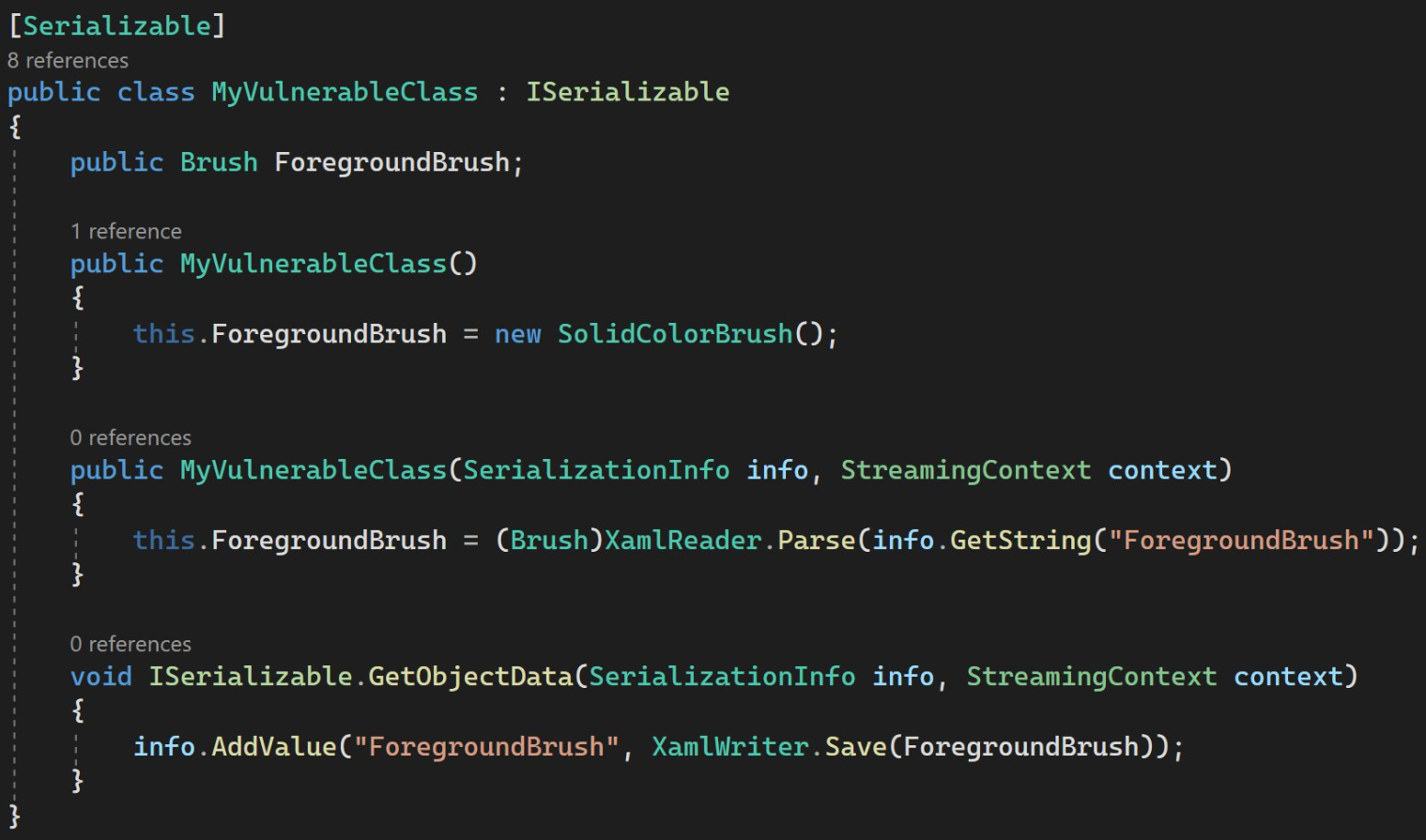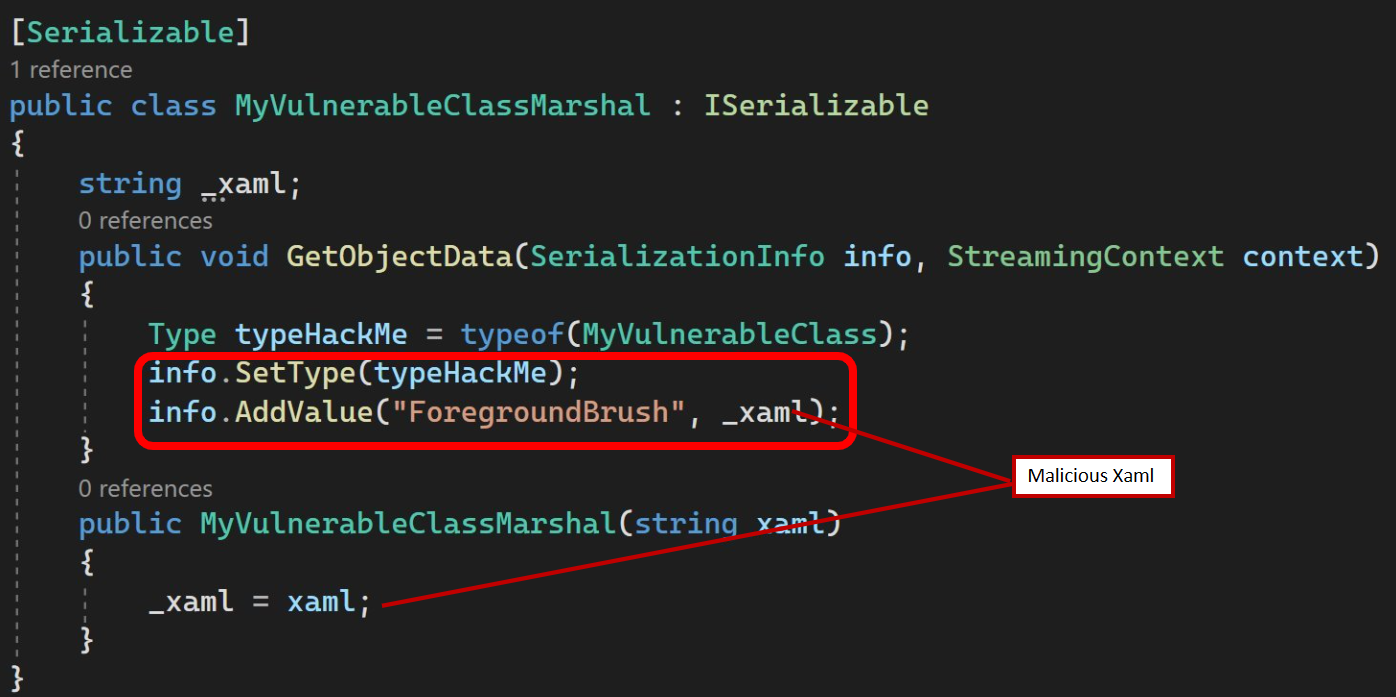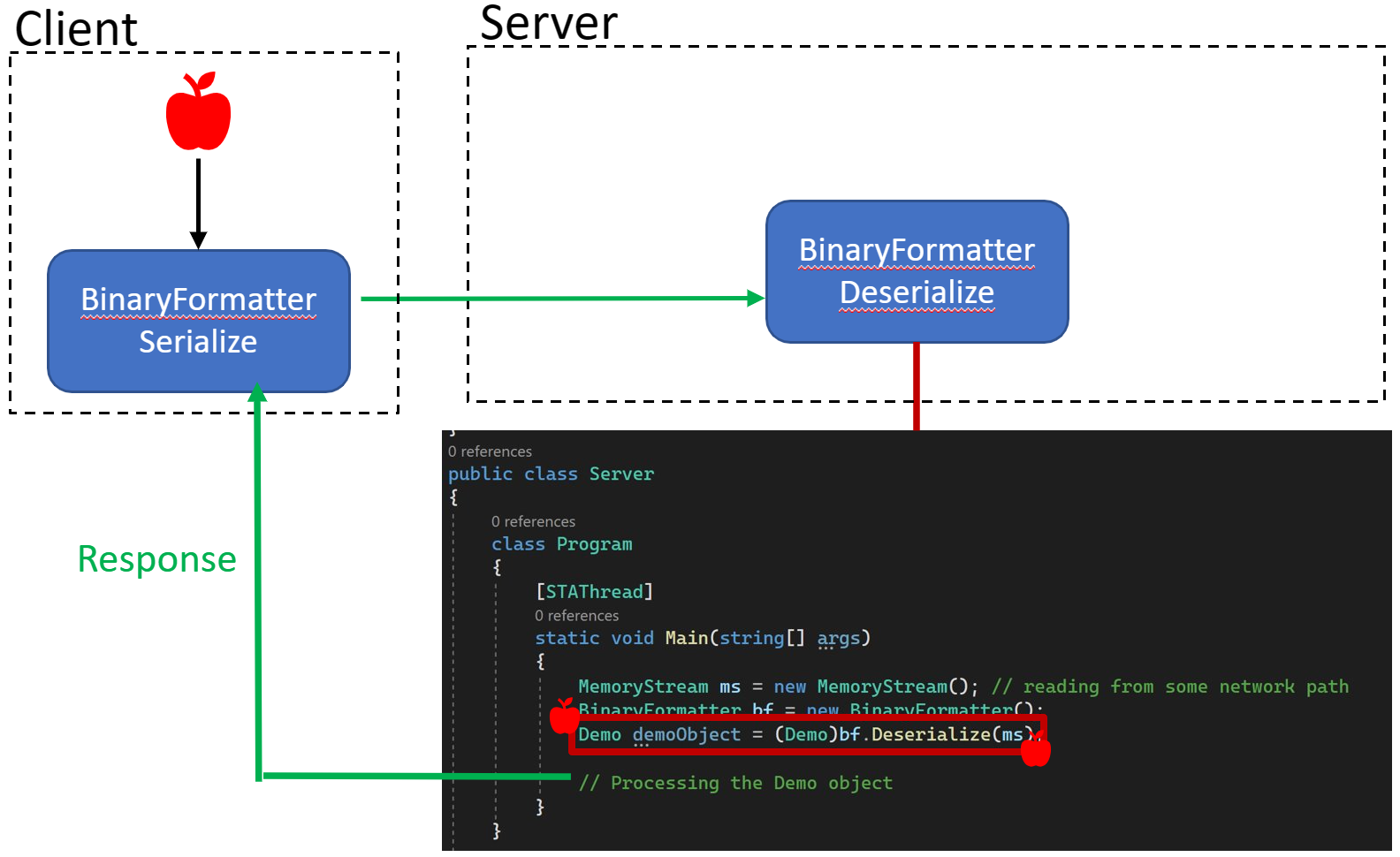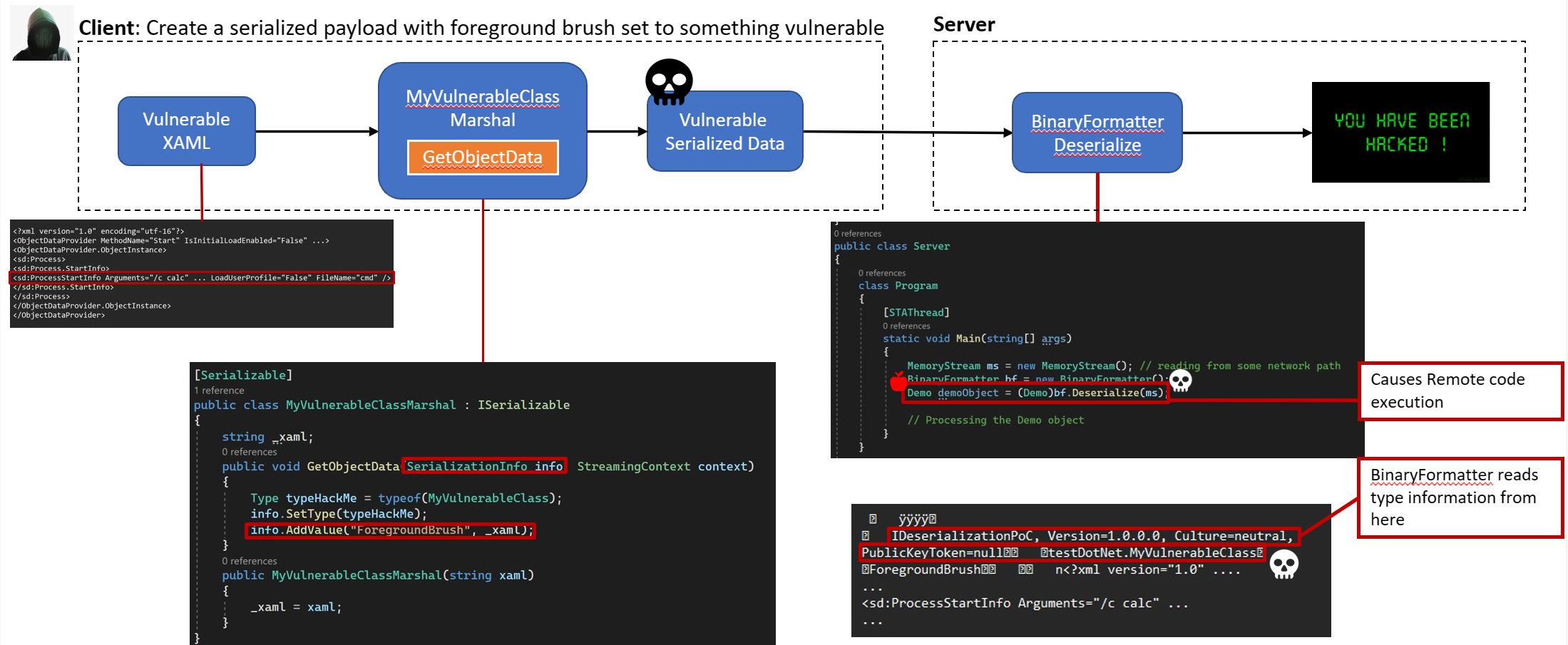Note: Prior to proceeding further, it is highly advisable to familiarize yourself with Part 1 and Part 2 offering profound insights into serialization and deserialization, specifically within the context of the binary formatter in .NET.
I would like to extend due credit to my friend Varun, who collaborated with me on the investigations in this part.
In this section, our focus is on comprehending the root cause behind deserialization vulnerabilities. We employ the binary formatter deserializer to analyze these vulnerabilities.
In Part 2, oa pivotal takeaway from our exploration of the binary formatter is that, during deserialization, the type of the object to be instantiated is extracted from the serialization payload.
What are vulnerable types?
To grasp how deserialization vulnerabilities are exploited, let’s delve into the concept of vulnerable types. An exemplary instance of a vulnerable type is the TextFormattingRunProperties class found in the Microsoft.VisualStudio.Text.UI.Wpf.dll, housing WPF components. This class implements ISerializable, indicating it has custom deserialization logic within its constructor.
When we deserialize objects whose classes implement the ISerializable interface, their constructor (responsible for deserialization) is called by binary formatter to create an instance of the object. The binary formatter code generates a SerializationInfo object from the serialized payload, encompassing data for each public member variable of the object being deserialized. This serializationInfo object is passed to the constructor of the ISerializable object. These ISerializable objects also implement a GetObjectData function, called during the serialization of the ISerializable object. This function populates the SerializationInfo object passed to it by the binary formatter code, with the names of the object members and their serialized values. This object is used by binary formatter to then create the serialized byte stream of the ISerializable object.
Here’s a representation of the GetObjectData function (used during serialization) and the constructor (used during deserialization) of the TextFormattingRunProperties class:
Note: Zoom into images for clarity

In the case of TextFormattingRunProperties, it contains a member variable named ForegroundBrush of type Brush, which is not serializable. During serialization of the TextFormattingRunProperties class, the value of the ForegroundBrush member is converted to XAML and added into the SerializationInfo object, which is then used to create the binary stream. During the deserialization of TextFormattingRunProperties, the XAML is read back from the SerializationInfo object and XamlReader.Parse function is used to recreate the ForegroundBrush object from the serialized XAML content.
To simplify the explanation of the vulnerability, let’s consider the class MyVulnerableClass below, exhibiting the same serialization and deserialization behavior as the TextFormattingRunProperties class discussed above:

Upon attempting to serialize MyVulnerableClass, the resulting serialized payload appears as follows:

Observe the XAML content in the serialized payload, containing the value of the ForegroundBrush member of MyVulnerableClass. In our implementation of MyVulnerableClass, just like the TextFormattingRunProperties class, this XAML is parsed during deserialization using XamlReader.Parse.
One of the functionalities/usecases of XAML is that it allows executing a process. For example the below XAML content specifies that the code processing this XAML should invoke the calculator function. Hence, when XamlReader.Parse is used to process this XAML content, a calculator process gets spawned.

Here’s where it gets intriguing. Can the XAML content in the serialized payload of MyVulnerableClass be substituted with malicious XAML that triggers a process to spawn?
Absolutely!
As a malicious client, I can craft a serialized payload of MyVulnerableClass/TextFormattingRunProperties, incorporating malevolent XAML to spawn a process on the server side during payload deserialization. This approach enables remote code execution on the server handling the deserialization process.
Crafting a Malicious Payload: A Step-by-Step Guide
Creating a malicious serialized payload involves a strategic implementation, as demonstrated in the code snippet below. In this example, an attacker can construct a MyVulnerableClassMarshal class that implements the ISerializable interface. Within the GetObjectData function, the attacker sets the type of the serialized object to MyVulnerableClass/TextFormattingRunProperties and configures the serialized payload for the ForegroundBrush member with malicious XAML. Leveraging the binary formatter to create serialized data for an instance of MyVulnerableClassMarshal yields the desired malicious serialized payload for the MyVulnerableClass/TextFormattingRunProperties class, which can then be transmitted to a server.

It’s crucial to note that this exploitation method is effective only if the DLL containing the vulnerable class (MyVulnerableClass/TextFormattingRunProperties) can be loaded into the server-side process. The susceptibility arises from the prevalence of several vulnerable types within the .NET framework, with DLLs for these types almost always expected to be available on the server. While our discussion primarily focuses on the .NET framework, similar challenges exist in other languages and frameworks as well.
These vulnerable types are called gadgets. YsoSerial is a tool designed to generate such malicious payloads for various gadgets.
Deciphering the Attack Path
In a typical use case of serialization and deserialization, a client serializes an object (e.g., an instance of demo class, symbolized by an apple) which it transmits to the server for processing. The server, in turn, deserializes this serialized data to instantiate an object of the demo class and proceeds to process the information, ultimately returning the results.

However, this seemingly innocuous server endpoint, responsible for deserialization, becomes a potential vulnerability. An attacker can exploit this by crafting a payload using a vulnerable type, as elucidated in earlier sections, and then dispatch it to the server. Intriguingly, the vulnerable type need not align with the expected demo type on the server side. The critical vulnerability lies in the fact that the binary formatter determines the object to instantiate based on the type name provided in the serialized payload. This inherent behavior is what makes it susceptible. When “the type to be deserialized is controlled by user input,” it becomes a breeding ground for deserialization vulnerabilities.
The comprehensive attack path is visually represented in the image below:

With this insight, you now possess a nuanced understanding of deserialization-related vulnerabilities. In the forthcoming final part, we will delve into various preventive measures to fortify against such vulnerabilities.
